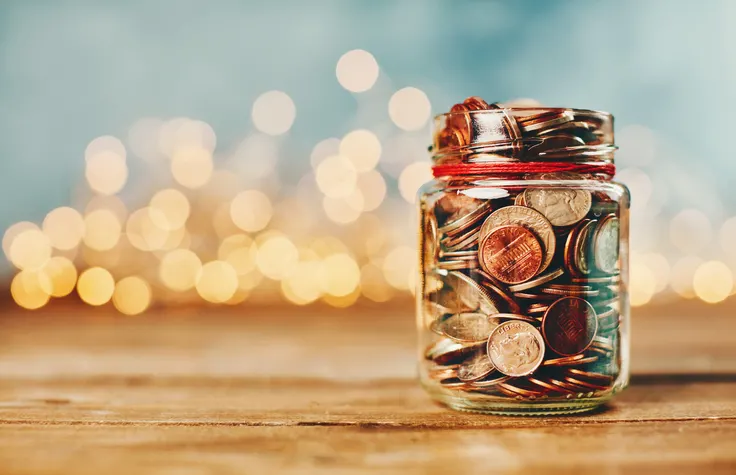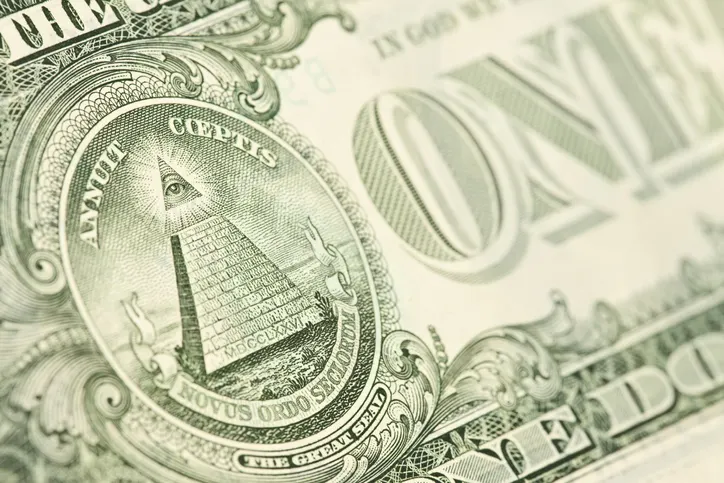There is a lot of history behind the dollar currency and how it became what it is today. For example, did you know that some American communities (cities) print their own currency and that the US $100 bill carries the image of Benjamin Franklin for a reason? Here are the top 13 other money facts you have probably never heard of:

America started minting coins since 1792
History suggests that Americans have been printing money since 1792 and the earliest American currency existed mainly as coins. The first coins were made from precious metals and had great value. It was only around 1862 during the American Civil War that the US Treasury Department started printing paper money (from cotton). It was introduced in America to supplement coins that were running out of the system. Because the coins actually contained precious metals, some Americans would hoard them with the aim of using them to cushion themselves against inflation caused by the Civil War.
The dollar bill is highly circulated
The one-dollar bill accounts for a whopping 48% of paper bills produced by the Bureau of Engraving & Printing. Typically, dollar bills circulate for about 18 months before wearing out of the system. When you carefully examine the US dollar bill, you may notice a few peculiar things; an eagle with thirteen arrows and a pyramid are all conspicuous symbols on the currency. In 2010, it was estimated that the U.S Mint created over 1.8 billion-dollar bills. Assuming you had 1 million-dollar bill, they would weigh a little over 2000 lbs. Additionally, there are about 293 ways people can make a change for just a one-dollar bill.
Pennies have a long history
Whether you love them or dislike them, pennies share a chapter in American history. In fact, they have been in the system for a long time and were the first coin denominations in the United States of America.
Their history stretches back to 1793 when they were made of pure copper. Ex-president Abram Lincoln first appeared on the penny as early as 1909. Modern US pennies are minted from copper, zinc, and nickel.
America produced over 4.9 billion pennies in 2011, and the latest design of the US penny still features Lincoln’s face on the front. Modern pennies also carry a Union shield comprising 13 vertical stripes. Throughout American history, several attempts have been made to stop the minting of the penny. Nevertheless, it still exists in the system.
Living persons may not feature on US currencies
America prides itself as a beacon of democracy globally, and US laws have always tried to distinguish themselves as democracy-centered. During the chaotic Revolutionary years, legislators thought it wise to bar living people from being featured on US coins.
The rule is that — irrespective of their status, it’s unlawful for a living person to be captured on American money. The primary purpose of this legislation is to ensure that the United States does not look like a monarchy; living kings and queens used to cast their own images on their countries’ currencies.
However, one former president Calvin Coolidge managed to defy the odds; in 1926, his photo featured on a commemorative coin marking America’s Sesquicentennial Independence.
Women and minority groups appear on US currencies
If you were thinking that only legendary male statesmen like President Lincoln appear on US money, think again! Several women have also featured on American currencies over the course of history. In fact, in 1893, Queen Isabella of Spain made history as the first woman (First Lady) to feature on American money.
George Washington’s wife Martha Washington also appeared on American paper money. Extraordinary women like Hellen Keller, Susan B. Anthony and Sacagawea have also appeared on circulating American currencies. Booker T. Washington entered history for a while as the first African American to appear on a memorial half dollar.

It’s not a bad idea to borrow money
Contrary to popular opinions, borrowing is not always a bad financial strategy. Personal loans can actually help you consolidate your debt, but it all depends on how you use the money. Although different circumstances may trigger you to apply for a loan, it’s critical to pay back (probably with interest) when the time is due.
When you find a loan package that comes with a reasonable interest rate, you could use the money to remodel your home, purchase a vehicle, sort out medical bills, and make smarter investments such as starting a business.
Taking installment loans in Idaho from Wise Loan is one way to cope with the COVID-19 impact on your income. The good news is that whether you have good or bad credit scores, Wise Loan offers Idaho residents flexible loan packages between $200 and $2000.
Why the $1 bill features a pyramid
Concerning images on the $1 bill, most Americans understand that George Washington, an eagle, and the seal of the US Treasury all symbolize American values. The big question is: why is there a pyramid on the back of the American $1 bill? Although typically, pyramids are associated with ancient Egypt, a pyramid also forms part of the official seal of the USA. American historians believe that the pyramid represents strength. The thirteen steps represent the first 13 states of America. However, the uncompleted top of the pyramid means that more work lies ahead.
Why Benjamin Franklin appears on the $100 bill
American paper currencies feature key heroes like George Washington, Abraham Lincoln, Alexander Hamilton, and Andrew Jackson. While Hamilton appears on the $10 bill because of his position as the first Secretary of the US Treasury, some people question why Ben Franklin (a newspaper editor and inventor) also features on the $100 bill.
Well, Franklin appears on the $100 bill because he is among the key founding fathers of the United States of America. Moreover, he signed the Declaration of Independence. Franklin emphasized the core values of hard work as a tool for creating wealth. This notion became a bedrock for the American Dream. Above all, Benjamin Franklin used his printing skills to help print America’s currencies.
Some US cities make local currencies
Believe it or not, some communities print their own local currencies. They were common during the Great Depression (1929-1940), in particular. But in the last couple of decades, some US cities also produced local currencies to boost their circulation in their local economies and help their small businesses expand.
These developments started in the town of Ithaca, NY. By 1991, ex-president Paul Glover and a team of locals had produced One Ithaca Hour, which was thought to be equivalent to $10. Meanwhile, there are other large and small local denominations as well. The US Mint is not the only authority that produces money; local communities like Walt Disney also make their own currencies.
The US government has not printed a $1 million bill
Contrary to popular myths, the American government has never officially issued a one-million-dollar bill. Although the government has printed the $100,000 Gold Certificate series, which featured the image of ex-president Woodrow Wilson, these bills were not made available for public circulation.
Instead, banks only used them for banking transactions. Interestingly, the $100 bill is the only circulating currency that doesn’t feature a US president’s face. Founding Father Ben Franklin enjoys that singular honor.
The word “money” originates from a Roman deity
Arguments about the origin of “money” often make mention of Rome. It’s believed that the word “money” traces its origin to a Roman deity who was responsible for protecting the coinage of Romans. Roman money was decreed to be stored in the Temple of Juno Moneta.
Located at the heart of the Roman city, the Temple of Juno Moneta was the place where coins were minted. Juno, as a deity, protected the state and also took care of the city’s funds. As a result, the English word “money” and its derivatives may have originated from the Roman protectress of funds, Moneta.
Julius Caesar was still alive when his name was printed on coins
Julius Caesar goes down in history as the first living person to have his name printed on a coin around 44 BCE. Apparently, Caesar used his military might and political influence to convince those who were responsible for minting Roman coins to put his image on the currency.
In the 21st century world, it’s more common for deceased presidents or national heroes to appear on money. Nevertheless, back in the ancient days, Julius Caesar managed to defy the odds.
The phrases on the U.S. currency
Finally, the phrase “In God We Trust” first appeared on American 2-cent coins around 1864-1873. It then reappeared on American money in 1955 and has been written on all US currencies since 1963. Latin phrases like E Pluribus Unum (Out of Many, One) and Novus ordo seclorum (Order of the New Age) have also been inscribed on US currencies.
Hopefully, you had fun reading these exciting facts about money.

Jessi is the creative mind behind The Coffee Mom, a popular blog that combines parenting advice, travel tips, and a love for all things Disney. As a trusted Disney influencer and passionate storyteller, Jessi’s authentic insights and relatable content resonate with readers worldwide.


